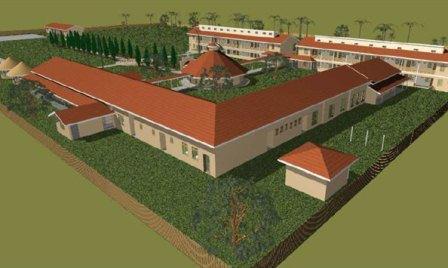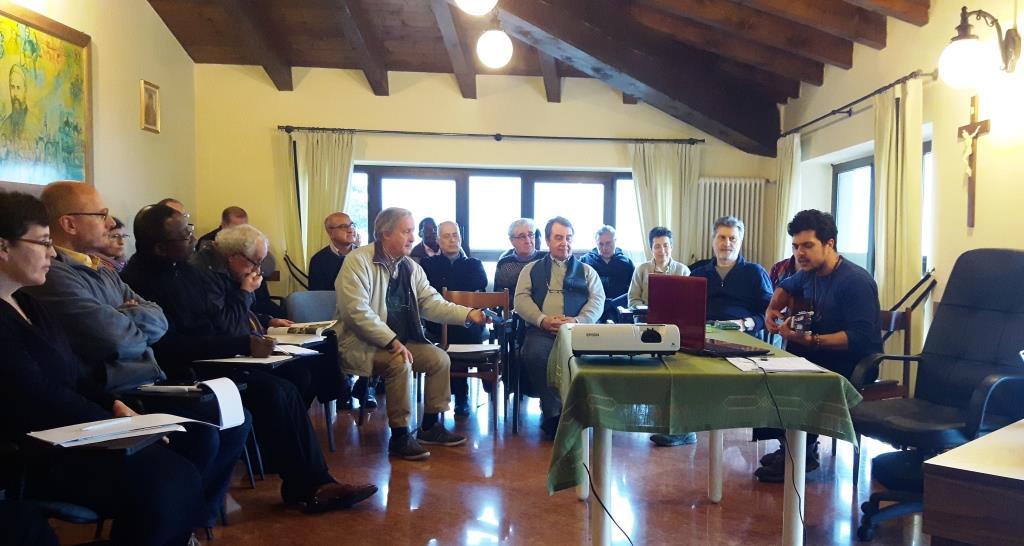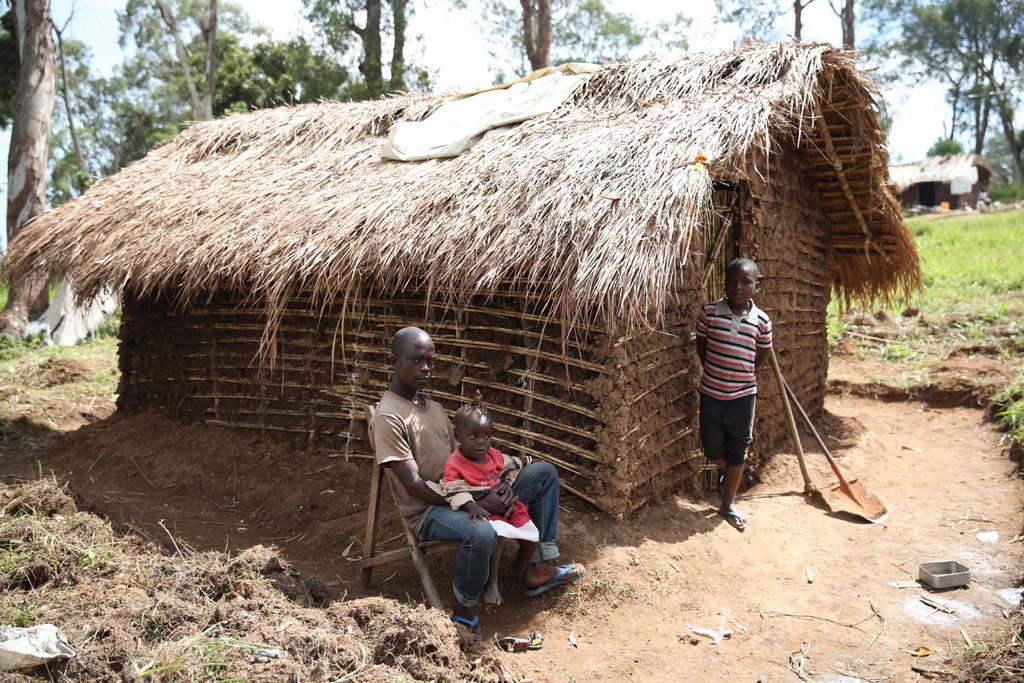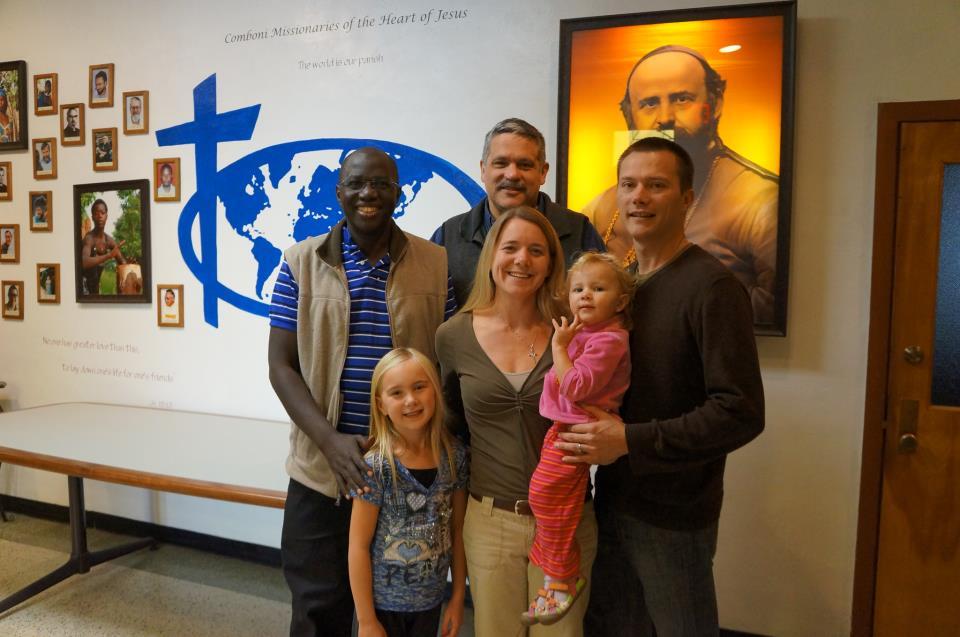Daniele Comboni
Missionari Comboniani
Area istituzionale
Altri link
Newsletter
Thursday, November 6, 2014
A Centre for human, pastoral, and spiritual formation, peace building, and trauma healing is being initiated in South Sudan at Kit, near Rejaf, a few kilometers from Juba town. The Religious Superiors’ Association of South Sudan (RSASS) is spearheading the initiative in collaboration with the Catholic Bishops of South Sudan. Archbishop Paulino Lukudu Loro of Juba blessed the ground for the construction of the proposed Centre on Saturday, October 11, 2014.
Fr. Daniele Moschetti,
Provincial Superior,
of the Comboni Missionaries,
in South Sudan.
We obtained an interview with the Chairperson of RSASS, Fr. Daniele Moschetti. He was in Nairobi in a mission to solicit funds toward the construction and operationalization of the Centre. Fr. Moschetti who is also the South Sudan Superior of the Comboni Missionaries described the proposed Centre as a common venture and called on all to contribute to the realization of the project. Below is the transcript of the interview.
What is this proposed Centre?
It’s a national centre that will help all the seven dioceses of South Sudan, but also to have a broader vision, because it is a centre for human, pastoral, and spiritual formation, with a special focus on trauma healing, and peace building. These are the root causes of many difficulties that we have in South Sudan (that need to be dealt with) to overcome the cycle of death - after the two wars and now a new war.
This moment, as religious, we have seen as a priority, after our discernment, a priority that is important to give an answer – a small drop, but an important instrument that can be at the service of the people of South Sudan.
Whom are you going to be targeting at this Centre?
We are targeting the youth, the women, but (also) the religious, the priests, the bishops, (and all those) operating with people on the ground in different parts of South Sudan.”
Who are those spearheading the realization of this project?
Yes, it is RSASS, the Religious Superiors’ Association of South Sudan. It comprises of 46 congregations in the whole of South Sudan and, of course, in strict collaboration with the bishops, and the bishops are blessing the project and supporting (it) very much. And, (we are also) opening up to AMECEA, SECAM, (and) to all organizations of the Church. There are a lot of requests from the Catholic NGOs that are present (in South Sudan) like CRS, Cafod, Trocaire; (these) are very much ready to support programs in this particular centre.
What are your present priorities and how much is this project estimated to cost?
In this moment, we need to focus on the building itself because it is a project of 2million (US) dollars at least the first phase; with the three phases, it will be 2.7million dollars. It is quite demanding but we believe in the policy of drops. If everyone brings their own drop for sure we shall achieve (and divine) providence will help us.”
What are the exact phases of this project?
The first one is the centre itself, the fence, the refectories, the hall, the dormitories, and the different types of buildings, (including) the church. (This is) for the basic starting. The second phase will be a youth dormitory, because we want to do a lot of activities with the youth. And the third phase is to add to what is already in the first phase (that is) another wing for another forty beds. So practically altogether they should be one hundred beds if the three phases and almost sixty or seventy for the youth. So, it is a big centre and (a) big initiative also.”
Two issues are critical to the realization of this worthy project. One is financial resources, which you have just explained. Another is human resources. How are you going about achieving these?
We are appealing to different donors: Catholic NGOs, private benefactors, but (we are) also targeting episcopal conferences in the U.S., in Germany, in England, in Spain, but also religious associations in different parts of the world, AMECEA, SECAM, and all good Samaritans who can chip in, even if it’s only 100 dollars, 1,000 dollars, this is an important sign because it is a common project. This is our dream. We would like to accomplish it in 2 years if it is possible. If providence helps us in say 1 year we are ready to start. Very soon we shall start already fencing and a borehole, and maybe if we have some money in January/February (2015), to start some buildings.
For human resources, first of all, these 46 congregations and of course also the diocesan priests that are already present in the country can be resource persons for many different programs. And second, and this is important, there will be a congregation running the centre. We are in contact with the Jesuits of East Africa; we are in dialogue and hope to finalize this soon. They are very much focused on this project because it is within their own charism. They could give a great help also in the Catholic University, also in the major seminary.
(At this Centre, bishops) will also have a place where to meet because we know that in Juba hotels are expensive, and this is another challenge to the Church in South Sudan. Whenever you want to do a gathering of two or three days you are spending thousands and thousands of dollars.
Inasmuch as you are looking for the initial capital to put up the basic structures for the Centre, how will you go about sustaining operations at this centre once the buildings are finished?
All the programs will have a kind of contribution to the Centre. And as an association we have Emmaus House in Juba. We have decided as assembly of religious to give this land to an investor (who is) going to build some apartments and several other things, but they are going to build for us in that particular land five rooms for missionaries, religious, who are passing by in Juba to avoid spending a lot of money in hotels, which is very expensive. It will also host the office of RSASS.
At the same time, every year we are getting some US$43,000 from the (religious) association for the running of the programs but also for the centre. We foresee that with the presence of the Jesuits and other congregations who accept to be there to be capable to manage and to set a good foundation for sustainability.
What kind of reception are you getting about this project as you speak to people?
It is very positive. Wherever I have been, in the U.S. where I have been for one for mission appeal, everybody has accepted and understands the need of this Centre because there is no Centre at all in the whole of South Sudan of this kind. Also here in Nairobi, going around to possible donors and other institutions, there is really understanding of the situation; a lot of promises of different kinds, also financially. We hope that this will be concretized with thousands of dollars because at the end we need to get there. As executive, we also have a fundraising committee, and this comprises of lay people and religious. We are trying to find out different methodologies to get these funds.
How far are you in this fundraising initiative?
We are just starting because the official launch was just last Saturday (October 11th) by Archbishop Paolino. We have already received three donations, not big for the moment, $25,000, another $15,000, and then $10,000. This can be a (good) sign. Our intention is always to give a monthly update of what we (have) received and from which donors. It is good for others to understand that this is a common adventure, and everyone trying to chip in will be remembered.
Your concluding remarks?
I fully believe that this Centre can be a great blessing for many, not only within the Church but in the (entire) society of South Sudan. We want to place there an example also for the government and for others, because with unity we can reach many objectives and to go beyond. This will be a Centre of encounter, to build peace among the tribes, to facilitate women of different tribes, youth of different tribes, to understand each other, because there is a lot of potentiality and talent in each tribe in South Sudan.
One question was, why (this project now) when there is still a kind of civil war in some parts of the country. We are religious answer that as religious, we are not going away. We are there to work. We are 46 congregations. When they started the last war (December 2013), all the NGOs ran away, and we remained everywhere we were, in the bush, in the swamps, in the missions. This Centre wants to be one of the answers for a better future for the people of South Sudan. This is a help and a sign to go beyond emergencies. We cannot leave forever in emergencies. We need to go to the root causes and to solve and to help South Sudanese achieve a better South Sudan.






